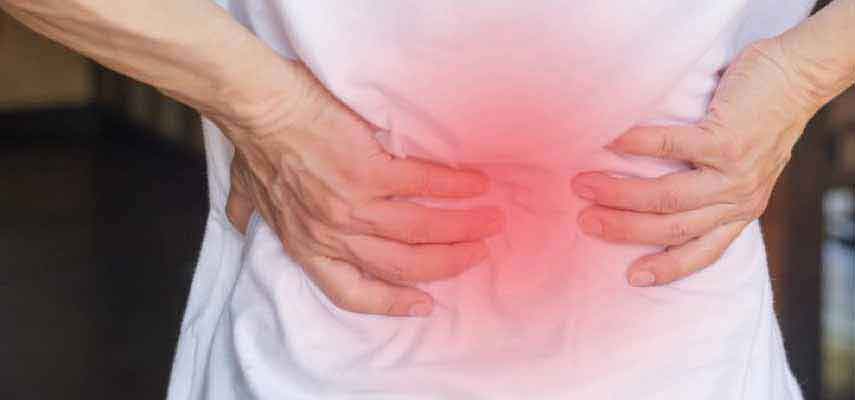For decades, dysfunction of the sacroiliac joint has been thought to be one of the most common causes of leg and low back pain. Proving this hypothesis with standard diagnostic procedures however remains elusive to this day particularly that the discomfort it causes are similar to the pain produced other spine problems.
What is the Sacroiliac Joint (SIJ)?
The primary function of SIJ is to transmit all upper body weight/forces to the hips and legs. It is anatomically located inferior to the lumbar spine and above the coccyx or tailbone. The SIJ links the triangle shaped bone at the bottom of the spine (also known as sacrum) with the iliac crest (pelvis). This axial joint is characterized as small yet very resilient as it is being reinforced by ligaments. This network of strong muscles and ligaments limit all motions hence, the joint only able to move roughly 2-4 mm on all directions. Although it doesn’t have much motion, it is still able to act as a shock absorber. It’s rotating motion decreases as an individual ages or increases with pregnancy.
What Causes SIJ Dysfunction?
Dysfunction and pain on the SIJ may be caused by mechanical injury or strain. Generally, this condition is caused by any alteration on its normal motion that includes hypermobility/instability (excessive movement) or fixation/hypomobility (decreased physical activity). SIJ pain is produced by falls or a combination of rapid rotation and vertical compression (such as when carrying a heavy article and twisting body). SIJ pain may also be due to degenerative sacrolitis and SIJ disruptions.
Who are at Risk of SIJ Pain?
SIJ problems are more common amongst women, particularly young and middle-aged women due to pregnancy and their wider pelvises.
SIJ Disorders and Low Back Pain
Some experts reveal that problems on the SI joint is an actual yet usually unacknowledged significant cause of approximately 30% of individuals suffering from low back pain. Statistics revealed that patients reporting low back pain had experienced SIJ pain whereas substantial pain is thought to be coming from the SI joints or the hips.
The SI joints are oftentimes under appreciated as a causative factor for low back pain because of the diagnostic challenges it presents. Usually, healthcare providers associate common low back pain with a protruding disc despite the absence of neurological manifestations. In some cases, SIJ disorders can actually occur with lumbar spine problems such as sciatica, osteoarthritis and herniated disc. In addition to this, the pain felt with SIJ problems are similar to the discomfort felt from radicular or discogenic low back pain.
What are the Signs and Symptoms of SIJ dysfunction?
Common manifestations of SIJ dysfunction includes:
- Lower back pain felt on one side which may radiate to the groin area or anywhere above the knee level. In some cases, the pain can extend to the ankle or foot.
- Pain felt is similar to sciatica.
- Hip pain.
- Discomfort in buttocks, legs or superior the spine when running, sleeping, lifting, walking or sitting on the affected side.
- Decrease in pain when lying down.
What diagnostic tests are done to determine presence of SIJ problems?
To diagnose problems on the sacroiliac joint, a series of procedures including comprehensive patient history, imaging tests and other clinical exams must be performed. A differential diagnostic methodology that includes the spine, hip and SI joint, must be undertaken to accurately identify the actual cause of low back pain.
In diagnosing SI joint disorders, an individual’s history of any SIJ problem is taken. Physical examination such as palpation and provocative tests (FABER – Flexion, Abduction, External Rotation, compression, thigh thrust, distraction, gaenslen) will be performed. A significant finding during these procedures would include pain that is below the L5 joint. The patient may also experience low back pain from the provocative procedures and tenderness felt at the posterior part of the SIJ. Imaging studies for any asymmetry or abnormalities through MRI or CT scan will also be requested. Lastly, diagnostic injections to the joint will be undertaken to accurately diagnose SIJ problem.
Methods to Relieve Symptoms
Some safe methods to perform at home weeks/days after injury or when starting SIJ treatment include:
- Rest – Activities must be kept at minimum. Sudden movements or activities that may worsen low back pain must be avoided.
- Ice – Ice compresses may be placed on the area just above the buttocks for 20 minutes 2 to 3 times in a day to help relieve pain. Ice must not be placed directly on the skin.
- Pain medications – Some over the counter pain medications are available to relieve discomfort. However, one must visit his healthcare provider first to assess the safety of these drugs particularly if with other comorbidities (e.g. hypertension, ulcers, kidney problems).
- Massage – Massaging thigh, lower back and buttocks may help relieve symptoms.
- Heat – Application of heating pad can help in relieving soreness while loosening tightened muscles.
When should you call a Doctor?
Visiting a doctor is important when the following symptoms occur:
- Abrupt increase in discomfort and pain intensity
- Unexplained fever
- Sudden tingling or numbness felt in the hips or lower back
- Numbness or weakness of the legs







 This article changed my life!
This article changed my life! This article was informative.
This article was informative. I have a medical question.
I have a medical question.
 This article contains incorrect information.
This article contains incorrect information. This article doesn’t have the information I’m looking for.
This article doesn’t have the information I’m looking for.